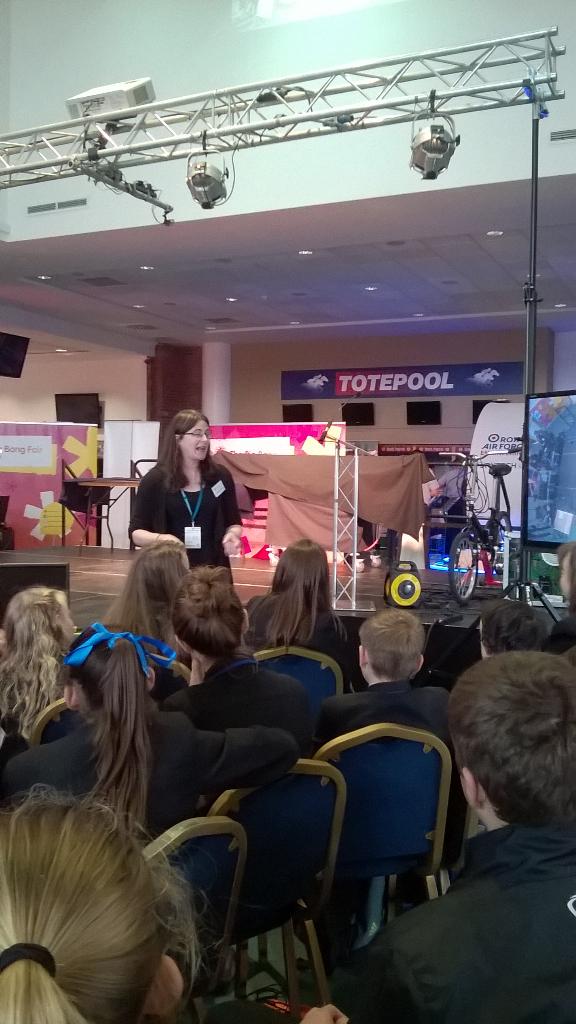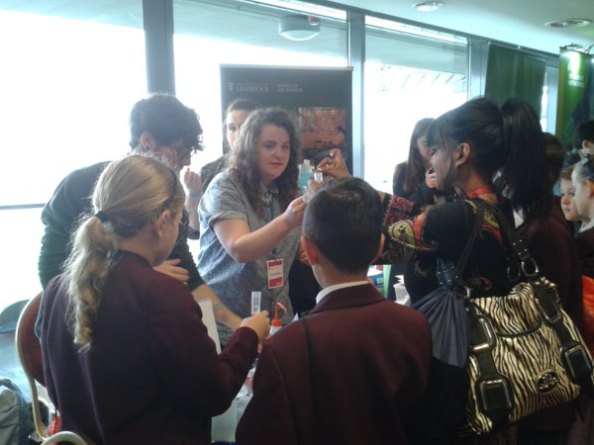The Smallpeice Trust is a charitable organisation that promotes science and engineering through the delivery of hands-on workshops and residential courses for secondary school pupils. Over the summer, I volunteered as a supervisor at 4 residential courses run by The Smallpeice Trust. Each course is hosted by a different University and everyone involved stays in the University’s halls of residence. This gives the students a glimpse into life as an undergraduate. During the day, the students participate in practical workshops run by engineers or university lecturers and attend careers talks by sponsoring companies. In the evenings, social activities are planned for the students and on the final evening, there is a formal dinner where the students are encouraged to interact with senior engineers from the sponsoring companies.

The first course I attended was in April and was hosted by the University of Durham. This course, ‘Step into STEM’, was designed to give local year 10 students insight into general science and engineering based careers. Over the 3 days, the students had to work in groups of 5 or 6 to complete two workshops, the first of which was run by the National Nuclear Laboratory. The students were challenged to build a centrifuge out of Mechano that could separate out ‘nuclear waste’ (a mix of oil, sand, and water). The second workshop was run by Jaguar Land Rover and had the students building a lightweight and durable car out of plastic sheeting, balsa wood, and a 9 volt battery.

My attempt at a durable and lightweight vehicle
The second course I attended was ‘Cyber Security with Electronics’ at the University of Portsmouth. This course was aimed at year 9 and 10 students with an interest in computer science and electrical engineering. Two organisations designed and ran the course, GCHQ and QinetiQ. To set the scene, the students were split into groups of 5 or 6 and asked to ‘infiltrate a terrorist ship’. The first challenge was to hack into a cluster of raspberry pis and required some programming knowledge. The second challenge was to use a printed circuit board and soldering to create an alarm that sounds when a light beam is broken. This was much easier for students who had previous experience soldering. Finally, breadboard circuit boards were used to build a robotic buggy that could follow a black line on a white surface. The three very different challenges meant that most students had at least one challenge with which they could fully engage.
Third up was ‘Supercomputing in Engineering’ at the University of Southampton. This was the smallest course I attended with only 22 year 12 students split into teams of 3 or 4. As the students were older, the course was run slightly differently with the day activities being run by staff from the University’s Aeronautical Engineering department. Lectures on aeronautical engineering were complimented with workshops that included building computers, modelling aeroplane wings and weather balloon flight paths, and programming and app developing.

An Aeronautics lecture at the University of Southampton
Finally, I attended a ‘Girls in Engineering’ course at the University of Bristol. This was a heavily subsidised course for girls in year 8 or 9 that aimed to encourage the study of STEM subjects at a higher level. There were 97 participants and 4 outside companies running workshops, Lloyds Registry, Selex, National Nuclear Laboratory, and Babcock. The Lloyds Registry challenge was to build a boat out of wood and an air propeller. Selex challenged the girls to add a series of sensors onto a remote control car. The National Nuclear Laboratory required the students to build a centrifuge that could separate an oil-water-sand mix. And finally, the Babcock challenge was to build a crane out of bamboo and rope.

The Smallpeice Trust booked @Bristol for an evening activity, something we all enjoyed!
Overall, working as a supervisor was rewarding but tiring work. During the day, a supervisor has the opportunity to engage with the students and the challenges set, but in the evening you are also responsible for making sure that the students get to bed on time.



